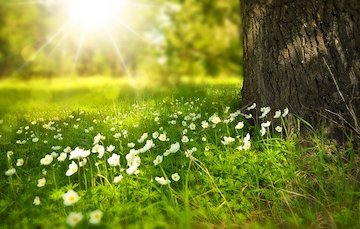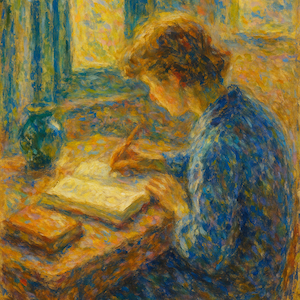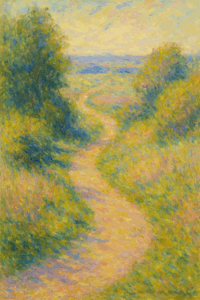教科書や参考書の解説を『絵』に例えてみました。”解説の読み方”の参考にしてください。
絵が“独白”になってしまうことがある。
描き手がすべてを語りきってしまって、観る者にはうなずくことしか残されていない。上手くはある。でも、決まりきった物語を聞かされているようで、見終わったあとに余韻が残らない。
けれど、“対話”する絵もある。
描かれていない部分があって、意味がはっきりしない。観る人がその空白に、自分の記憶や気持ちをそっと滑り込ませる。絵の中に置かれた小さな椅子に、静かに腰を下ろすような感じだ。
描き手は語りすぎず、観る者が少しずつ語り始める。
だから、その絵は、見るたびに違って見える。
昨日の自分と、今日の自分で、物語が変わっていく。
それはもう、ただの絵ではなく、開かれた風景なのだ。
まとめ
学びも、きっと(“対話”する絵)に少し似ている。
自分の中の空白を、静かに埋めていくようなもの。
用意された解答をなぞることじゃない。
内側からふと浮かび上がった疑問や解釈――
それを、自分の言葉で辿っていくこと。
それが、本当の学びのかたちなんだと思う。
英文
Sometimes, a painting turns into a monologue.
The artist says everything, leaving the viewer with nothing to do but nod along.
It may be skillful—technically flawless, even—but it feels like listening to a story whose ending has already been decided.
When it’s over, there’s no resonance left behind.
But then there are paintings that speak with you, not at you.
There are spaces left undefined, meanings that never quite settle.
And into those quiet gaps, the viewer gently slips their own memories, their own feelings.
It’s like finding a small chair tucked into the painting, and quietly sitting down.
The artist doesn’t say too much.
And so, slowly, the viewer begins to speak instead.
Each time you look, the story shifts—
Yesterday’s self sees something different from today’s.
At some point, it stops being just a painting.
It becomes an open landscape.
Learning, I think, is a little like that.
It’s not about chasing down the right answer.
It’s more like softly filling in the blank spaces inside yourself.
A question or an insight rises from within, uninvited.
And you follow it—
in your own words, at your own pace.
That, to me, is what real learning looks like.





